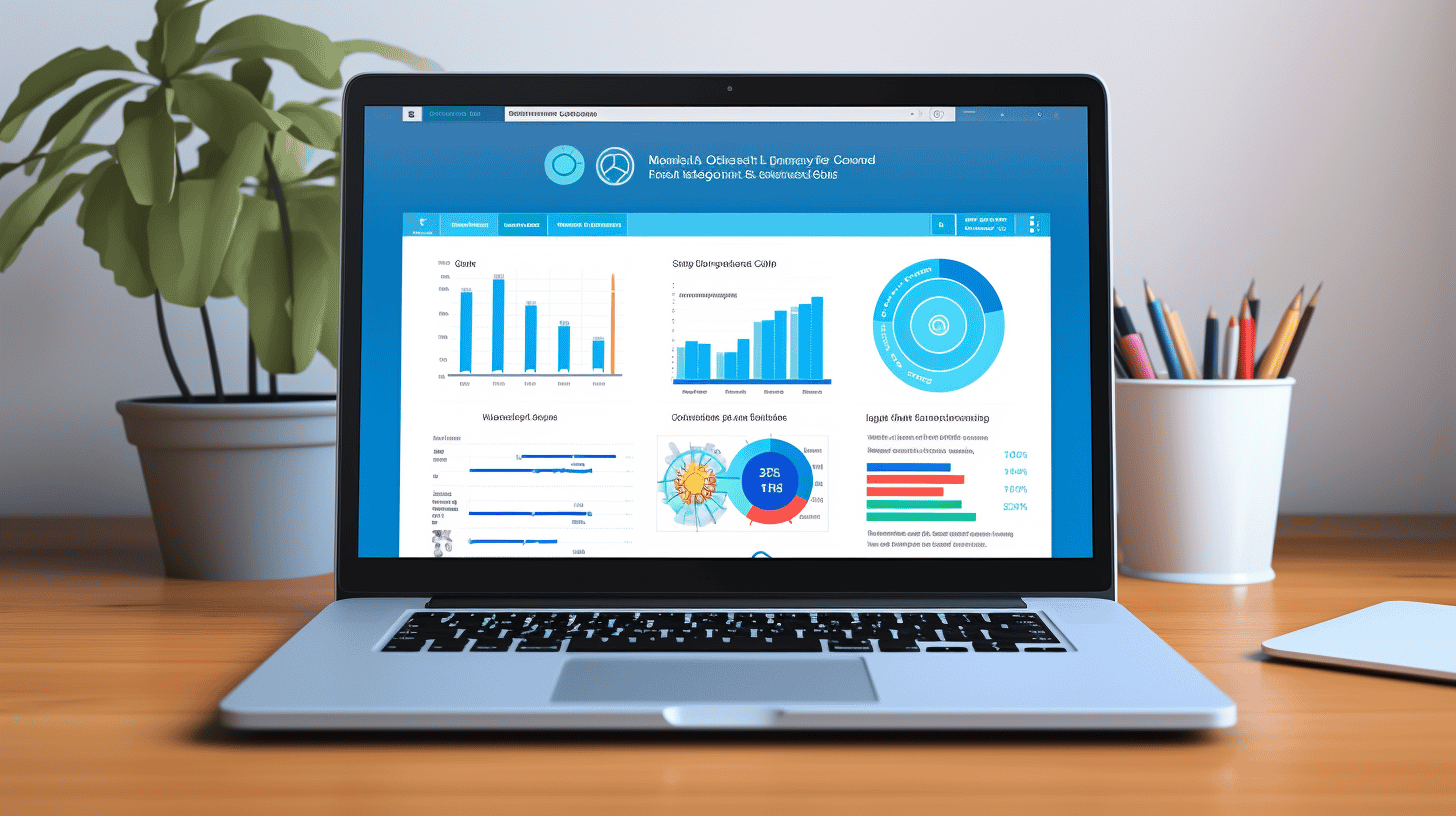在當今的數位環境中,擁有一個維護良好的網站對於任何線上業務的成功至關重要。無論您經營的是小型部落格還是成熟的電子商務商店,定期更新和簡化您的網站對於保持業務順利運作至關重要。
維護網站可能是一個艱鉅的過程,特別是如果您使用像 WordPress 這樣的內容管理系統。隨著網路環境的不斷變化,重要的是要跟上最新趨勢並確保您的網站安全、用戶友好且效能優化。
幸運的是,有各種節省時間的策略和工具可以幫助簡化 WordPress 線上商店的網站維護流程。從選擇正確的插件到自動化,這些策略可以節省您的時間和精力,同時確保您的網站始終處於最佳狀態。
在本文中,我們將探討一些簡化 WordPress 線上商店網站維護的有效策略。我們還將討論定期維護的重要性以及使用 WordPress 進行電子商務的好處。那麼,讓我們深入研究如何利用這些節省時間的策略來優化您的網路商店。
網站維護的重要性
要成功經營線上業務,維護一個運作良好的網站絕對至關重要。您的網站通常是潛在客戶與您的品牌的第一個接觸點,因此給他們留下積極而持久的印象非常重要。在本節中,我們將探討網站維護應該成為每個企業主首要任務的各種原因。
確保網站安全
在當今的數位環境中,網站安全已成為一個主要問題。隨著駭客攻擊和資料外洩等線上威脅的增加,採取主動措施保護您的網站和使用者的敏感資訊至關重要。定期的網站維護對於保障您的線上形象起著重要作用。
以下是網站安全應優先考慮的一些主要原因:
- 保護用戶資料: 網站安全漏洞可能會導致個人資訊的洩露,包括信用卡詳細資訊和登入憑證。這會嚴重損害客戶對您品牌的信任。
- 預防惡意軟體感染: 定期維護有助於識別和刪除可能進入您網站的任何惡意程式碼或軟體。防止惡意軟體感染對於維護網站的完整性和保護訪客免受潛在傷害至關重要。
- 保持軟體為最新版本: 過時的軟體和外掛程式經常容易受到安全漏洞的攻擊。透過定期更新您網站的 CMS、主題和插件,您可以確保擁有最新的安全性修補程式和錯誤修復,從而最大限度地降低發生安全事件的風險。
提升使用者體驗
維護良好的網站意味著良好的使用者體驗。當訪客進入您的網站時,您希望為他們提供無縫且愉快的瀏覽體驗。這就是為什麼網站維護對於促進積極的用戶體驗至關重要:
- 載入時間快: 加載緩慢的網站會讓人感到沮喪並阻止用戶進一步探索。定期維護有助於優化您網站的效能,確保其快速且有效率地載入。
- 移動響應能力: 隨著越來越多的用戶使用智慧型手機和平板電腦瀏覽網頁,擁有一個適合行動裝置的網站至關重要。定期維護可讓您測試和優化網站在不同裝置和螢幕尺寸上的反應能力。
- 斷開的連結和錯誤: 隨著時間的推移,連結可能會損壞或過時,從而導致糟糕的用戶體驗。透過定期維護,您可以識別和修復斷開的鏈接,糾正錯誤並確保所有網站元素正常運作。
讓您的網站跟上最新趨勢
數位格局不斷發展,新趨勢和新技術不斷湧現。讓您的網站與這些進步保持一致以保持競爭力並提供現代的用戶體驗非常重要。定期的網站維護有以下好處:
- 設計更新: 透過保持網站設計的最新狀態,您可以確保它符合當前的設計標準和使用者期望。這包括更新字體、顏色、佈局和圖像,使您的網站看起來煥然一新、現代感十足。
- 優化SEO: 搜尋引擎演算法不斷變化,不定期更新的網站可能會在搜尋引擎排名中失去知名度。網站維護可讓您實施 SEO 最佳實踐,例如優化元標記、添加相關關鍵字和改進網站結構。
- 內容更新: 在當今的網路世界中,新鮮且相關的內容才是王道。定期維護可讓您使用新的部落格文章、文章、產品描述和其他內容更新您的網站,以保持您的受眾參與度並再次造訪。
總之,網站維護不是一次性的任務,而是一個需要持續關注和努力的持續過程。透過優先考慮網站安全性、促進積極的用戶體驗以及跟上最新趨勢,您可以確保您的網站仍然是推動業務成長和給您的受眾留下持久印象的有效工具🚀。
了解 WordPress 的線上商店
🛍️ WordPress 在電子商務領域的崛起🛍️
在創建網上商店方面,WordPress 的受歡迎程度近年來顯著上升。這個多功能的內容管理系統 (CMS) 最初被認為是部落客的強大工具,但現在它已發展成為建立和管理電子商務網站的強大平台。讓我們深入探討為什麼 WordPress 已經成為網路商店的首選。
✅ WordPress 對網路商店的優勢 ✅
- 易於使用:WordPress 對於線上商店來說最大的優勢之一是其用戶友好的介面。憑藉其直覺的儀表板和拖放功能,即使沒有編碼經驗的人也可以輕鬆建立和維護專業的電子商務網站。只需點擊幾下,您就可以自訂網站設計、新增產品、管理庫存和處理訂單。
- 豐富的主題和外掛選擇:WordPress 提供了專為電子商務設計的廣泛主題和外掛。無論您正在尋找時尚簡約的設計還是功能豐富的模板,您都會找到無數適合您品牌形象的選項。此外,像 WooCommerce 這樣的外掛程式(WordPress 最受歡迎的電子商務外掛程式)提供了強大的功能來管理產品、處理付款並優化您的線上商店的效能。
- 可擴充性和靈活性:WordPress 可以隨著您的業務成長而靈活地擴展您的線上商店。無論您是小型新創公司還是大型企業,WordPress 都能滿足您的需求。透過其模組化架構,您可以根據需要添加或刪除功能,並無縫整合第三方服務以增強商店的功能。
- 搜尋引擎優化 (SEO) 友好:WordPress 因其 SEO 友好特性而聞名,這意味著它旨在幫助您的網上商店在搜尋引擎結果中排名更高。 WordPress 具有簡潔的程式碼、輕鬆的內容優化、可自訂的 URL 以及安裝 SEO 外掛程式的能力等內建功能,可讓您針對搜尋引擎優化您的網站,從而吸引更多的自然流量和客戶。
- 社群支援和文檔:WordPress 擁有龐大而活躍的開發人員、設計師和用戶社區,他們隨時準備提供協助。透過眾多論壇、線上資源和影片教程,您可以找到支援和指導來克服可能遇到的任何挑戰。此外,定期更新和安全修補程式可確保您的網路商店保持安全和最新狀態。
總而言之,WordPress 因其易於使用、主題和外掛範圍廣泛、可擴展、搜尋引擎優化功能以及活躍的社群支援而成為線上商店的熱門選擇。透過利用 WordPress 的強大功能,您可以建立一個視覺上吸引人、用戶友好且成功的電子商務網站。那麼,為什麼不加入已經採用 WordPress 建立網上商店的數百萬企業家的行列呢? 🌟🛒
簡化 WordPress 網站維護的策略
您是否發現維護您的 WordPress 網站很困難?不用擔心;你並不孤單。維護 WordPress 網站可能是一項耗時的任務,但只要採取正確的策略,您就可以簡化流程並確保您的網站順利運作。在本文中,我們將探討一些簡化 WordPress 網站維護的有效策略。
選擇正確的插件💪
WordPress 維護的關鍵方面之一是確保您的網站上安裝了正確的外掛程式。插件可以幫助增強功能並改善用戶體驗,但明智地選擇它們至關重要。以下是選擇插件時需要考慮的一些提示:
- 聲譽和評論: 在安裝插件之前,請閱讀其他用戶的評論和評分,以了解他們的體驗。尋找具有正面回饋和大量活躍安裝的插件。
- 相容性和更新: 確保您選擇的外掛程式與您的 WordPress 版本相容並定期更新。過時的外掛程式可能會帶來安全風險,並且可能無法與最新的 WordPress 更新一起正常運作。
- 支援和文件: 檢查插件是否有良好的支援選項和可用文件。如果您遇到任何問題,獲得可靠的支援可以節省您的時間並減少挫折感。
一致的網站備份策略
定期備份您的 WordPress 網站對於保護您的資料和確保業務連續性至關重要。為了應對意外資料遺失、安全漏洞或網站崩潰的情況,可靠的備份策略至關重要。以下是備份 WordPress 網站的一些最佳做法:
- 自動備份: 設定自動備份,確保您的網站定期備份,無需人工幹預。有多個插件可以幫助您自動化此過程。
- 異地備份: 最好將備份儲存在異地、遠離 Web 伺服器的安全位置。這確保即使您的伺服器或主機服務提供者遇到問題,您的備份仍然是安全的。
- 測試備份: 不要只是假設您的備份工作正常。透過將備份還原到測試環境來定期測試它們,以確保所有資料和功能都完好無損。
優先考慮網站優化
提高 WordPress 網站的效能和速度可以對使用者體驗和搜尋引擎排名產生重大影響。以下是一些需要考慮的最佳化策略:
- 快取: 利用快取外掛程式儲存網站頁面的靜態版本來減少頁面載入時間。
- 影像優化: 壓縮和優化圖像以減小其檔案大小而不影響品質。像 Smush 這樣的插件可以幫助自動化這個過程。
- 壓縮 CSS 和 JavaScript: 縮小 CSS 和 JavaScript 檔案可以減少其大小,從而加快頁面渲染速度。
有效使用內容管理系統
充分利用您的 WordPress 內容管理系統可以幫助簡化您的網站維護流程。以下是一些提示:
- 使用類別和標籤組織內容: 正確地對內容進行分類和標記可以使用戶和搜尋引擎更輕鬆地瀏覽。
- 調度內容: 使用 WordPress 的規劃功能提前規劃和發布帖子,確保您的網站上持續不斷地提供新鮮內容。
實施使用者回饋
傾聽使用者的意見並解決他們的顧慮對於維護成功的 WordPress 網站起著至關重要的作用。以下是有效實施使用者回饋的方法:
- 回饋表: 在您的網站上嵌入回饋表,以鼓勵使用者提供建議並報告他們可能遇到的任何問題。
- 定期監控回饋: 定期審查和分析使用者回饋,以識別模式並解決常見的痛點。
定期更新主題和外掛🔄
保持主題和外掛的更新對於安全性和效能至關重要。請遵循以下最佳做法進行更新:
- 定期檢查更新: 透過您的 WordPress 儀表板定期檢查外掛程式和主題更新並及時更新。
- 在暫存環境中測試更新: 在將更新套用到您的即時網站之前,請在暫存環境中進行測試,以確保相容性並避免任何中斷。
透過遵循這些策略,您可以簡化您的 WordPress 網站維護流程並確保您的網站保持安全、優化和用戶友好。結合這些最佳實踐不僅可以節省您的時間和精力,還可以為您的網站訪客帶來積極的用戶體驗。因此,立即開始實施這些策略,享受無憂的 WordPress 維護體驗!
簡化流程的自動化和工具
在當今快節奏的數位世界中,網站是企業的門面,維護網站可能是一項繁瑣的任務。從更新內容到修復錯誤、執行例行備份到監控網站效能,網站維護需要時間、精力和持續關注。
幸運的是,有一個解決方案:自動化。在簡化網站維護流程方面,自動化可以帶來巨大的改變。透過利用自動化的力量,企業可以節省時間,減少人為錯誤,並確保其網站始終順利運作。讓我們探索網站維護中的自動化概念,並發現一些可以幫助簡化此過程的工具和軟體。
網站維護中的自動化概念
在網站維護中,自動化是指使用工具和軟體自動執行日常任務,無需人工幹預。透過設定預先定義的規則和計劃,網站所有者可以自動執行維護的各個方面,從而騰出寶貴的時間來進行其他關鍵的業務活動。
自動化的好處
在網站維護中實施自動化有許多好處,包括:
- 節省時間:透過自動執行重複性任務(例如內容更新或備份),網站所有者可以節省寶貴的時間,並將其分配給更具策略性的活動。
- 減少人為錯誤:自動化任務可最大限度地減少人為錯誤的風險,確保維護過程的一致性和準確執行。
- 提高效率:自動化可以更快、更有效地執行維護任務,進而提高整體生產力。
- 增強安全性:自動安全掃描和更新可以幫助及時識別和解決漏洞,保護網站免受潛在威脅。
- 提高可靠性:有了自動化,網站維護就成為一個可靠的過程,確保定期執行基本任務。
自動化網站維護的工具和軟體
有多種工具和軟體可用於幫助自動化網站維護的各個方面。以下是一些流行的:
- 內容管理系統:WordPress、Drupal 和 Joomla 等內容管理系統提供內建自動化功能。它們允許網站所有者安排內容更新、管理備份和自動進行安全性檢查。
- 備份和還原插件:WordPress 的 UpdraftPlus 或 WordPress 和 Joomla 的 BackupBuddy 等工具可自動備份網站資料並在需要時還原資料。
- 監控工具:UptimeRobot 和 Pingdom 等服務監控網站正常運作時間和效能,並在偵測到問題時發送通知。
- SEO 審核工具:Moz 和 SEMrush 等工具可以自動審查和優化網站 SEO 的過程,幫助提高搜尋引擎排名。
- 安全插件:WordPress 的 Sucuri 或 WordPress 和 Drupal 的 Wordfence 等外掛程式提供自動安全掃描、漏洞偵測和惡意軟體清除功能。
透過將這些自動化工具納入其網站維護工作流程,企業可以簡化流程,簡化任務,並確保其網站始終保持最新、安全且順利運作。
請記住,自動化就像擁有一個可靠的助手,可以處理重複性任務,讓您專注於最重要的事情:發展您的業務並提供無縫的使用者體驗。那麼為什麼不擁抱自動化並讓科技為您完成繁重的工作呢? 🤖✨
WordPress網店常見問題處理
介紹
在 WordPress 平台上建立的線上商店為企業提供一種方便且靈活的方式來建立線上業務並銷售產品和服務。然而,與任何技術一樣,WordPress 網站也會遇到各種問題,阻礙其效能和功能。在本文中,我們將探討 WordPress 線上商店面臨的一些常見問題,並討論克服這些問題的有效處理方案。
處理緩慢的載入時間
緩慢的加載時間可能會讓店主和顧客都感到沮喪。以下是導致您的 WordPress 線上商店載入速度緩慢的一些原因:
- 未優化的圖像:大型且未壓縮的圖片會顯著降低您網站的載入速度。確保透過調整影像大小和壓縮影像來優化影像,但不會過度影響品質。
- 插件太多:雖然外掛可以增強您的 WordPress 線上商店的功能,但外掛程式過多可能會導致效能問題。停用或刪除任何不必要的插件,只保留對您的商店必需的插件。
- 有限的伺服器資源:如果您的網站託管在資源有限的共享伺服器上,則可能會導致載入時間緩慢。考慮升級到提供更好資源和效能的專用伺服器或託管的 WordPress 託管解決方案。
解決網站安全問題
確保您的 WordPress 線上商店的安全對於保護您的業務和客戶資料至關重要。您可以採取以下步驟來解決網站安全問題:
- 保持你的 WordPress 版本為最新版本:WordPress 定期發布包含安全性修補程式的更新。確保您的 WordPress 核心、外掛和主題保持最新,以防止漏洞。
- 使用強大且獨特的密碼:弱密碼會使駭客更容易未經授權存取您的網站。密碼請使用大寫、小寫字母、數字和特殊字元的組合。此外,考慮使用密碼管理器為不同的帳戶產生和儲存唯一的密碼。
- 安裝安全插件:利用可靠的安全性外掛程式(如 Wordfence 或 Sucuri)為您的線上商店添加額外的保護層。這些外掛程式可以幫助偵測和防止惡意活動,例如暴力攻擊和惡意軟體感染。
處理過時外掛和主題的方法
過時的外掛程式和主題可能會對您的 WordPress 線上商店造成嚴重的安全風險。以下是有效處理這些問題的方法:
- 定期更新您的外掛和主題:開發人員經常發布更新來解決安全漏洞並提高效能。定期檢查更新並及時安裝,以保持您的外掛和主題最新。
- 刪除未使用的外掛和主題:未使用的外掛程式和主題不僅佔用不必要的空間,而且還可能成為攻擊者的潛在入口點。刪除不再使用的任何外掛程式和主題,以降低漏洞風險。
- 定期備份您的網站:在更新任何外掛程式或主題之前,請對您的網站進行完整備份。這樣,如果更新過程中出現任何問題,您可以輕鬆地將您的網站恢復到以前的狀態。
網站崩潰問題及解決方法
對於任何 WordPress 網路商店所有者來說,網站崩潰都可能是一場噩夢。以下是一些可能的原因以及有效解決網站崩潰的解決方案:
- 插件衝突:某些外掛程式可能彼此不相容,從而引起衝突並導致網站崩潰。暫時停用所有插件,然後逐一重新啟用它們,以識別衝突的插件並找到合適的替代品。
- 主題相容性問題:有時,編碼不當或主題過時可能會導致您的網站崩潰。確保您使用的主題由開發人員定期更新且與最新版本的 WordPress 相容。
- 伺服器資源不足:如果您的網站流量突然激增或缺乏足夠的伺服器資源,可能會導致網站崩潰。考慮升級您的託管計劃或聯絡您的託管服務提供者以取得協助優化您的伺服器配置。
結論
經營 WordPress 線上商店會面臨許多挑戰,但透過採取積極主動的措施和有效的解決問題策略,您可以確保為客戶提供順暢且優化的購物體驗。透過解決載入時間緩慢、網站安全問題、過時的外掛程式和主題以及網站崩潰等問題,您可以創建一個強大而可靠的線上商店,從而提高銷售量和客戶滿意度。
結論
總之,簡化 WordPress 網上商店的網站維護對於確保順暢且成功的線上業務至關重要。透過實施節省時間的策略和利用自動化工具,網站所有者可以節省寶貴的時間和資源,同時確保其網站安全、使用者友好且最新。
請記住,處理日常網站維護任務(例如選擇正確的外掛程式、持續備份您的網站、優化您的網站速度以及定期更新主題和外掛程式)對於您的線上商店的順利運作至關重要。
透過解決載入時間緩慢、安全問題、外掛程式和主題過時以及網站崩潰等常見問題,您可以為網站訪客提供無縫體驗並提高線上轉換率。
為了簡化網站管理並簡化維護流程,請考慮利用 託管-WP™。作為優質託管 WordPress 雲端託管平台,Managed-WP™ 提供專業的問題解決方案、基礎設施簡化和數位體驗自由。透過 Managed-WP™,您可以專注於發展您的線上商店,並將技術問題留給專家。
立即使用 Managed-WP™ 簡化您的網站維護並將您的 WordPress 線上商店提升到新的高度。
了解有關 Managed-WP™ 的更多信息 並釋放您的網站維護的潛力! 👉🚀
常見問題解答
- 有哪些節省時間的策略可以簡化 WordPress 網上商店的網站維護?
簡化 WordPress 線上商店網站維護的一些省時策略包括:1. 自動備份和更新,2. 使用可靠的託管服務提供商,3. 實施快取和 CDN,4. 利用調度工具進行內容更新,以及 5. 選擇響應迅速且易於自訂的主題。
- 為什麼自動備份和更新對於 WordPress 線上商店很重要?
自動備份和更新可確保您的網站及其元件定期安全地備份,從而最大限度地降低資料遺失的風險。它還可以幫助您的 WordPress 外掛程式、主題和核心檔案保持最新,從而提高安全性和效能。
- 選擇可靠的託管服務提供者如何幫助簡化 WordPress 網上商店的網站維護?
可靠的託管服務提供者可確保您的線上商店可存取且響應迅速,最大限度地減少停機時間和效能問題。它還提供自動備份、安全措施和可擴展性等功能,減少了手動維護任務的需要。
- 為 WordPress 網路商店實施快取和 CDN 有哪些好處?
實施快取和 CDN(內容分發網路)有助於儲存靜態檔案並從距離用戶最近的伺服器將其傳送給用戶,從而提高網站效能。這減少了載入時間、伺服器請求和頻寬使用,從而帶來更快、更流暢的線上購物體驗。
- 調度工具如何幫助 WordPress 網上商店更新內容?
調度工具可讓您規劃和自動執行內容更新,例如產品發布、促銷和部落格文章。這可確保您的網站保持新鮮和相關性,而無需人工幹預,從長遠來看,節省您的時間和精力。



















